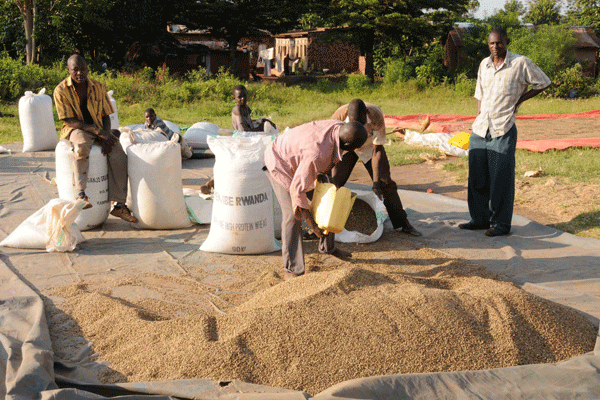Prime
Can Jinja Town be revived?

A street in Jinja town
What you need to know:
- There is a certain economic revival from the lowest years of scarcity in the early 1980s and 1986. The main roads (Nalufenya in Jinja and the main Jinja-Iganga road) have been resurfaced.
- Tourists who had deserted the town have returned in sizeable numbers.
- Private hotels and commercial buildings are being built.
On Wednesday August 3, I was a guest on 89 Smart FM in Jinja District on a weekly show that discusses the week’s news events.
When the discussion turned to Jinja, I had a few things to say that surprised and heartened many listeners.
Most Jinja residents and Basoga in general have in recent years lost hope and confidence in their main town, believing that Jinja is now in terminal decline.
My view was different. I told listeners of Smart FM that from my visits to Mbarara, although it is now the second most-vibrant town economically, Jinja is still in a much better physical condition overall than Mbarara.
Mbarara has risen in the last 15 years for a number of reasons – the people’s hard work, the fact that many politically-connected government leaders have their origins there, its location along the international land route to Rwanda, Burundi and the Democratic Republic of Congo, the modernisation of the traditional livestock industry.
However, in typical Ugandan/NRM fashion Mbarara’s story has been one of mindless growth where the focus is on making money and not on the more thoughtful aspects of a town like flower gardens, streets lights and children’s parks.
Much of Mbarara looks like Ndeeba and Katwe in Kampala. On the other hand Jinja, Mbale, Entebbe and the Bugolobi, Kololo and Nakasero parts of Kampala were planned, designed and built by the British colonial administration and it shows.
Many observers over the years have said Jinja is the best-planned town in Uganda and that is probably true. It is laid out much like Kenya’s western town of Kisumu, where it is part industrial town and part government civil service town.
Since 2011 when my interest in geography returned, I have become passionate about the plight and fate of Uganda’s upcountry towns.
To me the best measure of a country’s overall economic and social health is not what the capital city looks like, but what the second-tier upcountry towns look like and how they are faring.
Today in 2016, Jinja is roughly where Kampala was around 1994 or 1995. Most basic commodities are now available in shops and small supermarkets.
There are radio stations in town to help stimulate public debate, help the public keep track of news and keep the young people engaged.
There is a certain economic revival from the lowest years of scarcity in the early 1980s and 1986. The main roads (Nalufenya in Jinja and the main Jinja-Iganga road) have been resurfaced.
Tourists who had deserted the town have returned in sizeable numbers. Private hotels and commercial buildings are being built.
Jinja is now what it was in the 1960s and 1970s in its infrastructure, but its worst days of decay are now over.
The parts of the town most in decay are the old industrial area between the new Jinja Central Market and the fishing village and industrial area of Masese.
The Bugembe area along the Jinja-Iganga highway is also a slum for the most part. Many of the old government residential pool houses are in a dilapidated state.
The roads in Jinja’s residential areas starting from the YMCA to Nile Crescent, Lubogo Lane, State House and others have deteriorated but are not in as bad a shape as one might expect of the image of Jinja as a town in decline.
My opinion, then, is that what Jinja lacks at present and needs is an infusion of self-belief like what it had during the Obote II government in the early to mid-1980s when Nile FC was a leading national football team, Sailing Club was a popular resort for revellers and the town was still Uganda’s main industrial base.
Jinja right now is in a confusing stage of its history. It is no longer a mainly industrial town and is now more a tourism and hotel destination. But this fact of being more tourism than trade has not yet become clear to Jinja’s residents.
If enough Jinja residents can find in themselves some self-belief and ambition and get into lines of influence and decision-making or can influence the political and business leaders, the town can see a revival.
Somebody needs to define what the new post-manufacturing Jinja should be about. Once that new identity is worked out, it should be promoted.
Just two years ago, the main road leading into Jinja from Kampala, Nalufenya, was in a sorry state. A Chinese company began working on it and completed it late last year.
Overnight, what had been a rundown road has become a fairy beautiful road and has changed the face of the town along the way.
That’s why we should always think and look past present wreckage or ruins. Infrastructure is the easiest of things to repair or upgrade.
Long-time Kampala residents remember what Kampala International Hotel (today called Sheraton Kampala Hotel) looked like 30 years ago in 1986 when frogs lived in its swimming pool.
It underwent renovation until it was what it is today. Ugandan newspapers have undergone redesigns that totally transformed their image and quality.
All that Jinja needs is to recognise all this and set about making 2017 the year of Jinja’s revival.
As I have already said, Jinja is fortunate in the fact that its basic road network in the residential areas has remained intact, unlike Mbarara’s whose residential area has been reduced to a slum.
Incidentally, the way Mbarara has been transformed from an orderly town in the 1960s and 1960s into the semi-slum today proves that political and economic power alone do not transform cities or towns into modern entities.
They have to be planned and attended to. This is part of the reason that Fort Portal, although not in any way a political centre of Uganda or beneficiary of the NRM’s 30 years is widely regarded as Uganda’s cleanest town.
Jinja, you can do it.
www.twitter.com/timkalyegira
Facebook: Kampala Express




